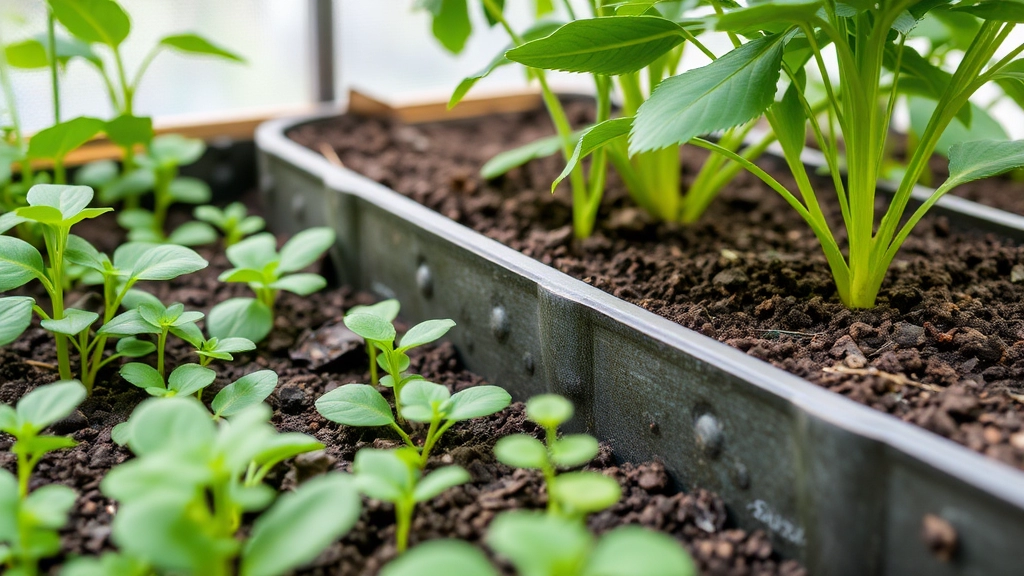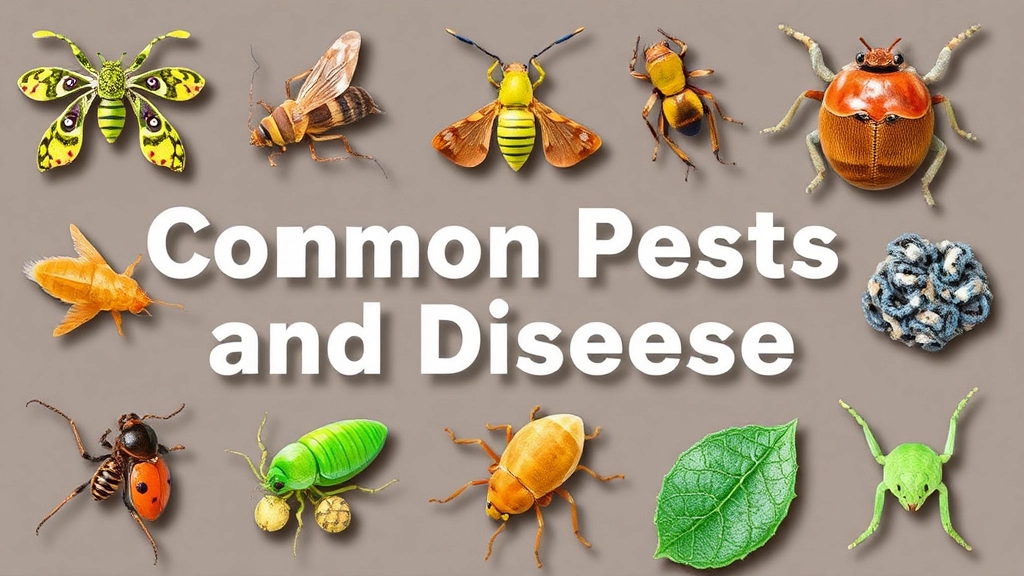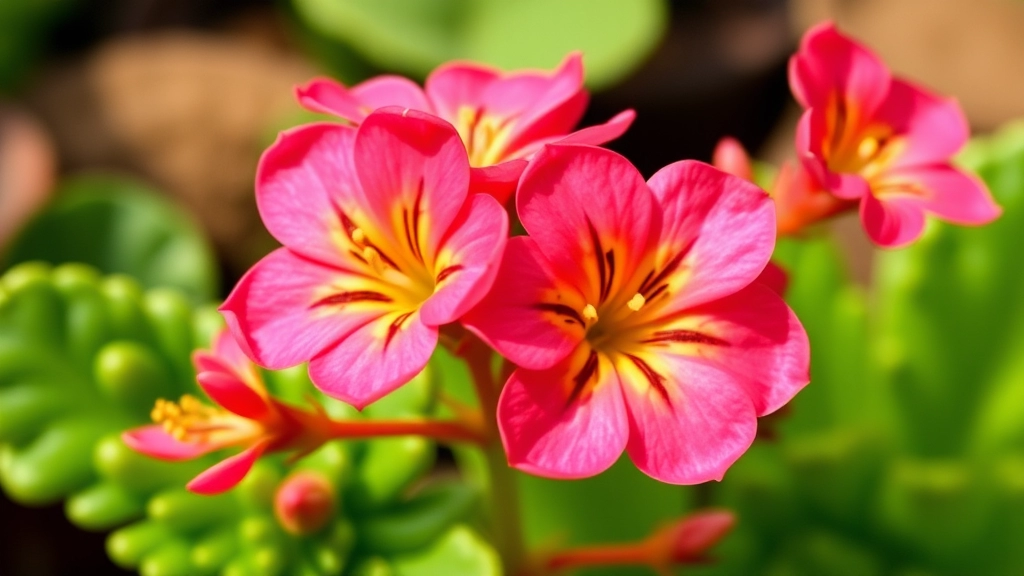Welcome, plant enthusiasts!
Today, we’re diving into the fascinating world of Kalanchoe uniflora, a gem in the succulent family. This compact beauty, native to Madagascar, boasts unique features that make it a standout in any collection. From its drought-tolerant nature to its charming bell-shaped flowers, Kalanchoe uniflora is a plant that’s both easy to care for and a joy to behold.
In this comprehensive guide, we’ll explore everything from the plant’s physical characteristics and natural habitat to its growing requirements and propagation methods. Whether you’re a seasoned plant parent or just starting your green journey, you’ll find valuable insights on how to keep your Kalanchoe uniflora thriving. So, let’s embark on this botanical adventure and uncover the secrets of this captivating succulent!
Overview of Kalanchoe uniflora
Hey there, plant lovers! Let’s chat about Kalanchoe uniflora.
This little beauty is a real gem in the succulent world.
It’s part of the Crassulaceae family, which is fancy talk for “stonecrop” plants.
Kalanchoe uniflora is native to Madagascar – how exotic, right?
It’s got this cool nickname: “Coral Bells Kalanchoe.”
Why? Well, its flowers look like tiny coral bells. Pretty neat, huh?
This plant’s a bit of a show-off, with its unique leaves and eye-catching blooms.
It’s not just a pretty face, though. Kalanchoe uniflora is tough as nails.
It can handle drought like a champ, making it perfect for forgetful waterers (guilty as charged!).
But here’s the kicker: it’s not just for looks or low maintenance.
Some folks use it for medicinal purposes too. Talk about a multi-tasker!
Whether you’re a seasoned plant parent or a newbie, Kalanchoe uniflora is worth checking out.
It’s like the Swiss Army knife of succulents – versatile, hardy, and always ready to impress.
So, ready to dive deeper into the world of Kalanchoe uniflora? Let’s go!
Physical Characteristics of Kalanchoe uniflora
Let’s dive into what makes Kalanchoe uniflora stand out from the crowd. Trust me, this little succulent’s got some serious charm!
The Basics:
Kalanchoe uniflora’s a compact stunner, usually hanging out at about 15-30 cm tall. It’s got this neat, bushy look that’ll make you want to give it a prime spot in your garden or home.
Leaves:
Now, the leaves are where it gets interesting. They’re:
- Fleshy and thick (classic succulent move)
- Oval or spoon-shaped
- Typically 2-5 cm long
- Often have a reddish tinge, especially when stressed
But here’s the kicker – they’re arranged in this cool spiral pattern along the stem. It’s like nature’s own art installation!
Flowers:
Alright, let’s talk flowers. These beauties are:
- Bell-shaped
- Usually white or pale pink
- Hanging downwards (like they’re shy or something)
- Blooming in clusters at the end of long stalks
The flowering season’s a real treat, usually happening in late winter to early spring. It’s like Kalanchoe uniflora’s way of saying, “Hey, spring’s coming!”
Stems:
The stems are pretty sturdy, which is great news if you’re a bit clumsy like me. They’re:
- Upright
- Branching
- Slightly woody at the base
Overall Look:
Picture this: a compact, bushy plant with thick, spiral leaves and delicate, drooping flowers. It’s got this perfect balance of tough and tender that makes it a real eye-catcher.
So, there you have it – Kalanchoe uniflora in all its physical glory. Whether you’re a seasoned plant parent or just starting out, this little beauty’s sure to add some pizzazz to your collection. And trust me, once you see those flowers in bloom, you’ll be hooked! If you’re interested in other Kalanchoe varieties, check out the Kalanchoe blossfeldiana hybrid or the unique Kalanchoe tomentosa ‘Teddy Bear’ for more succulent inspiration.
Natural Habitat and Distribution
Where does Kalanchoe uniflora call home?
Let’s dive into this succulent’s stomping grounds.
Kalanchoe uniflora is native to Madagascar. Yep, that big island off Africa’s east coast.
It’s not just anywhere in Madagascar, though. This plant’s picky.
You’ll find it in the central and southern parts of the island.
Think rocky areas and dry forests. That’s where it thrives.
Why these spots? Well, Kalanchoe uniflora loves a bit of sun and doesn’t need much water.
These areas give it just what it needs.
But here’s the kicker – it’s not just stuck in Madagascar anymore.
People love this plant, so it’s spread to other warm places.
You might spot it in gardens in:
- Southern Europe
- Parts of Africa
- Some spots in Asia
It’s even made its way to some parts of the Americas.
But remember, it’s not native there. Just a happy tourist.
In the wild, it’s still all about Madagascar.
That’s where Kalanchoe uniflora truly belongs and where it’s been hanging out for ages.
Growing Conditions and Requirements

Alright, let’s chat about how to keep your Kalanchoe uniflora happy and thriving. Trust me, it’s not rocket science, but there are a few key things you’ll want to nail down.
Light: The Sweet Spot
These little succulents are sun-lovers, but they’re not trying to get a sunburn. Here’s the deal:
- Bright, indirect light is their jam
- A few hours of morning sun? Perfect
- Afternoon sun? Might be a bit much, so watch out for scorched leaves
I’ve found that a east-facing window works like a charm. If you’re putting them outside, a spot with dappled shade is your best bet.
Soil: Well-Draining is the Name of the Game
Kalanchoe uniflora isn’t fussy, but it does have one big ask: don’t let its feet get wet. Here’s what you need:
- Cactus or succulent mix is ideal
- Or, make your own by mixing regular potting soil with sand and perlite
- The goal? Soil that drains quickly but still holds some moisture
Water: Less is More
Overwatering is the quickest way to kill these beauties. Here’s my watering routine:
- Let the soil dry out completely between waterings
- In summer, that might mean watering once a week
- In winter, you might only need to water once a month
Pro tip: If you’re not sure, wait an extra day. These plants can handle drought way better than soggy soil.
Temperature: Keeping it Cosy
Kalanchoe uniflora likes it warm, but not scorching. Here’s the sweet spot:
- Ideal range: 15-24°C (60-75°F)
- Can handle short periods of cooler temps, but not frost
- If you’re comfortable, your Kalanchoe probably is too
Humidity: Not a Big Deal
Good news: You don’t need to fuss with humidity for these plants. They’re pretty chill about it. Average room humidity is just fine.
Fertiliser: A Little Boost
These plants aren’t big eaters, but a bit of fertiliser can help them look their best:
- Use a balanced, water-soluble fertiliser
- Feed every 4-6 weeks during the growing season
- Skip fertilising in winter when growth slows down
Remember, growing Kalanchoe uniflora is all about mimicking its natural habitat. Give it plenty of light, well-draining soil, and go easy on the water, and you’ll be golden. It’s a plant that rewards a bit of neglect, so don’t stress too much. Just keep an eye on it, and you’ll soon get a feel for what it needs. If you’re interested in other Kalanchoe varieties, check out the Kalanchoe blossfeldiana, which is known for its beautiful flowers. For those who prefer a fuzzy texture, the Kalanchoe tomentosa varieties might be right up your alley.
Propagation Methods
Alright, let’s chat about how to multiply your Kalanchoe uniflora. It’s easier than you might think!
Leaf Cuttings: The Lazy Way
Ever noticed a leaf fall off and start growing? That’s nature’s cheat code.
- Gently pluck a healthy leaf
- Let it dry for a day or two
- Pop it on some well-draining soil
- Wait for roots and tiny plants to appear
Stem Cuttings: The Quick Route
Want faster results? Go for stem cuttings.
- Snip a 3-4 inch stem
- Remove lower leaves
- Dip in rooting hormone (optional, but helps)
- Stick it in moist soil
- Keep warm and slightly humid
Division: The Instant Gratification Method
Got a big, bushy plant? Divide and conquer!
- Carefully remove the plant from its pot
- Gently separate the roots
- Replant each section in its own pot
Seeds: The Patient Person’s Game
Fancy a challenge? Try growing from seeds.
- Sow seeds on top of well-draining soil
- Keep moist but not waterlogged
- Be patient – it takes time!
Remember, Kalanchoe uniflora is a succulent. It’s pretty forgiving, so don’t stress too much.
Which method sounds best to you? Give it a go and watch your Kalanchoe family grow!
Common Pests and Diseases

Alright, let’s chat about the nasty critters and annoying issues that can mess with your Kalanchoe uniflora. Trust me, I’ve been there, and it’s not fun when these problems pop up. But don’t worry, I’ve got your back!
Pesky Pests
First up, we’ve got those tiny troublemakers:
- Mealybugs: These little cotton-ball lookalikes love to suck the life out of your plant. Literally.
- Spider mites: Tiny spiders that leave webs and cause yellowing leaves. Not cool.
- Aphids: Small, soft-bodied insects that cluster on new growth. They’re like uninvited guests at a party.
Dealing with Diseases
Now, let’s talk about the sicknesses that can hit your Kalanchoe uniflora:
- Root rot: This is a biggie. Too much water? Your plant’s roots might start to rot. Yikes!
- Powdery mildew: Looks like someone sprinkled flour on your plant. Spoiler: It’s not flour.
- Leaf spot: Brown or black spots on leaves. It’s like acne for plants, but way worse.
How to Keep Your Plant Healthy
Here’s the deal: prevention is key. I learned this the hard way, but you don’t have to. Here are some tips:
- Don’t overwater. Seriously, it’s the number one killer.
- Give your plant some space. Good air circulation is like a shield against diseases.
- Keep it clean. Wipe those leaves down occasionally. It’s like a spa day for your plant.
When Trouble Strikes
If you spot a problem, don’t panic. Here’s what to do:
- Isolate the affected plant. It’s like quarantine for plants.
- Remove damaged parts. Sometimes you gotta cut your losses (literally).
- Use organic treatments first. Chemical warfare should be a last resort.
Remember, your Kalanchoe uniflora is tough. With a bit of care and attention, you can keep those pests and diseases at bay. And if something does go wrong? Well, now you know how to handle it like a pro. If you’re looking for more specific care tips, check out our guide on Kalanchoe blossfeldiana, which shares similar care requirements. For those interested in medicinal uses of Kalanchoe species, our article on Kalanchoe pinnata medicinal uses might be helpful.
Benefits and Uses of Kalanchoe uniflora
Hey there, plant lovers! Let’s chat about Kalanchoe uniflora and why it’s such a cool addition to your green family.
First off, this little beauty is a real eye-catcher.
Its unique flowers and compact size make it perfect for sprucing up small spaces.
But it’s not just a pretty face – Kalanchoe uniflora has some serious perks.
Air purification? Check.
Low maintenance? Double-check.
Here’s the lowdown on why you might want to get your hands on one:
1. Natural air freshener
- Kalanchoe uniflora helps clean the air in your home.
- It’s like having a mini air purifier that looks good too.
2. Stress buster
- Just looking at its lovely flowers can help you chill out.
- It’s like a mini zen garden on your windowsill.
3. Easy care
- Perfect for busy folks or newbie plant parents.
- It’s not fussy and won’t throw a tantrum if you forget to water it once in a while.
4. Space-saver
- Ideal for small flats or offices where space is tight.
- You get a pop of nature without sacrificing your precious square footage.
5. Versatile decor
- Works great in hanging baskets, terrariums, or as a standalone pot plant.
- It’s like the chameleon of the plant world – fits in anywhere!
6. Potential medicinal uses
- Some folks use Kalanchoe species in traditional medicine.
- (But always check with a pro before trying any herbal remedies, yeah?)
7. Gift-worthy
- Makes a brilliant pressie for plant lovers or as a housewarming gift.
- Who doesn’t love a living, breathing present?
So, there you have it – Kalanchoe uniflora isn’t just a pretty plant.
It’s a multi-tasking marvel that can brighten up your space and your mood.
Why not give it a go and see how this little gem can benefit your life?
Tips for Maintenance and Care

Alright, let’s chat about keeping your Kalanchoe uniflora happy and thriving. I’ve learned a thing or two about these beauties, and I’m excited to share some no-nonsense tips with you.
Watering Wisdom
Look, overwatering is the number one killer of these succulents. Here’s how to avoid it:
- Let the soil dry out completely between waterings
- Water less in winter, more in summer
- Use well-draining soil to prevent root rot
Light and Location
Kalanchoe uniflora loves the sun, but not too much of it. Here’s the sweet spot:
- Bright, indirect light is ideal
- Morning sun is great, afternoon sun can be harsh
- Rotate the plant regularly for even growth
Feeding Your Kalanchoe
These plants aren’t big eaters, but a little boost now and then doesn’t hurt:
- Feed with a balanced, water-soluble fertiliser
- Do it once a month during the growing season
- Skip fertilising in winter when growth slows down
Pruning and Grooming
Keeping your Kalanchoe uniflora looking sharp is pretty straightforward:
- Remove dead or yellowing leaves regularly
- Pinch off spent flowers to encourage more blooms
- Trim leggy growth to maintain a compact shape
Temperature and Humidity
These plants are pretty chill about their environment, but they do have some preferences:
- Ideal temperature range: 15-24°C (60-75°F)
- Can tolerate brief periods of cooler temps
- Average room humidity is fine, no need for misting
Repotting
Kalanchoe uniflora doesn’t mind being a bit root-bound, but eventually, it’ll need a new home:
- Repot every 2-3 years or when roots start peeking out of drainage holes
- Choose a pot just one size up from the current one
- Use fresh, well-draining succulent mix when repotting
Remember, the key to maintaining a healthy Kalanchoe uniflora is to keep things simple. These plants are pretty low-maintenance, so don’t overthink it. Just give them some sun, don’t drown them, and they’ll reward you with their unique beauty. And if you’re ever in doubt, just remember: it’s better to underwater than overwater. Trust me, your Kalanchoe blossfeldiana soil will thank you for it. If you’re interested in other varieties, you might want to check out the Kalanchoe tomentosa teddy bear, which has similar care requirements.
Seasonal Care Guidelines for Kalanchoe uniflora
Hey there, plant lovers! Let’s chat about keeping your Kalanchoe uniflora happy all year round.
Spring: Wakey-wakey time!
- Gradually increase watering as the plant wakes up
- Start feeding with a balanced fertiliser every 2-3 weeks
- Prune any dead or leggy growth to encourage bushiness
Summer: Sun’s out, fun’s out!
- Move to a brighter spot, but avoid scorching midday sun
- Water more frequently, but don’t let it sit in soggy soil
- Keep an eye out for pests – they love the warm weather too!
Autumn: Time to chill
- Reduce watering and stop fertilising
- Move to a cooler spot to encourage blooming
- Check for any signs of disease as humidity changes
Winter: Snooze mode activated
- Water sparingly – just enough to prevent shrivelling
- Provide bright light, but protect from cold drafts
- Hold off on pruning until spring
Pro tip: Kalanchoe uniflora is pretty chill, but it hates wet feet in winter.
Remember, these are just guidelines. Your plant might have its own quirks!
Questions? Drop ’em in the comments. Let’s keep our Kalanchoe uniflora thriving all year!
Frequently Asked Questions about Kalanchoe uniflora
Let’s dive into some burning questions about Kalanchoe uniflora, shall we? I’ve chatted with loads of plant lovers, and these are the things they’re always asking about. No fluff, just straight-up answers to help you out.
Is Kalanchoe uniflora toxic to pets?
Yep, it’s a bit of a bummer, but Kalanchoe uniflora can be toxic to pets if ingested. Keep an eye on your furry friends around this plant. If you’ve got curious cats or dogs, it might be best to keep this beauty out of reach.
How often should I water my Kalanchoe uniflora?
Here’s the deal: these plants are succulents, so they’re pretty chill about water. Let the soil dry out between waterings. In summer, you might water once a week, but in winter, dial it back to once every 2-3 weeks. Easy peasy, right?
Can Kalanchoe uniflora survive outdoors?
Sure thing, but only if you live somewhere warm. These guys love temperatures between 15-25°C (59-77°F). If you’re in a colder spot, bring them inside when the mercury drops.
Why are my Kalanchoe uniflora leaves turning yellow?
Uh-oh, yellow leaves? Could be a few things:
- Overwatering (most common culprit)
- Not enough light
- Nutrient deficiency
Check your watering habits first, then consider moving it to a brighter spot.
How big does Kalanchoe uniflora grow?
These aren’t massive plants. They usually top out at about 30-45 cm (12-18 inches) tall. Perfect for small spaces or as part of a bigger succulent collection.
Can I propagate Kalanchoe uniflora from leaves?
Absolutely! It’s dead easy. Just pluck a healthy leaf, let it callus over for a day or two, then pop it on some well-draining soil. Keep it moist, and boom – new plant!
Does Kalanchoe uniflora bloom every year?
With the right care, yep! These beauties can flower annually, usually in late winter or early spring. Give them plenty of light and the right temperature, and you’ll be rewarded with lovely blooms.
How do I know if my Kalanchoe uniflora is getting enough light?
If your plant’s stretching out or looking a bit pale, it’s probably crying out for more light. These guys love bright, indirect sunlight. A south-facing window is ideal, but just keep an eye out for sunburn on hot days.
Remember, growing Kalanchoe uniflora isn’t rocket science. Keep these FAQs in mind, and you’ll be well on your way to becoming a Kalanchoe uniflora pro. Any other burning questions about Kalanchoe uniflora? Drop ’em in the comments, and let’s chat!
Frequently Asked Questions about Kalanchoe uniflora
How do I propagate Kalanchoe uniflora?
Kalanchoe uniflora can be propagated through leaf cuttings, stem cuttings, or division. For leaf cuttings, simply place a healthy leaf on well-draining soil and wait for roots to develop. Stem cuttings can be rooted in water or soil. Division works well for mature plants – carefully separate the roots and replant each section.
What type of soil is best for Kalanchoe uniflora?
Use a well-draining potting mix designed for succulents or cacti. You can also make your own by mixing regular potting soil with sand and perlite. The key is to ensure good drainage to prevent root rot.
How much light does Kalanchoe uniflora need?
Kalanchoe uniflora thrives in bright, indirect light. It can tolerate some direct morning sun but should be protected from harsh afternoon sunlight. An east-facing window is often ideal for this plant.
Is Kalanchoe uniflora drought-tolerant?
Yes, Kalanchoe uniflora is quite drought-tolerant due to its succulent nature. It can store water in its leaves and stems, allowing it to withstand periods of drought. However, regular watering is still necessary for optimal growth.
How do I encourage blooming in my Kalanchoe uniflora?
To encourage blooming, provide your Kalanchoe uniflora with bright light, proper watering, and a period of cooler temperatures (around 50-55°F) for about six weeks in late fall or early winter. This mimics its natural blooming cycle.
Can Kalanchoe uniflora be grown indoors?
Absolutely! Kalanchoe uniflora makes an excellent indoor plant. It’s compact size and low maintenance requirements make it perfect for windowsills, desks, or any bright spot in your home or office.
How often should I fertilize my Kalanchoe uniflora?
Fertilize your Kalanchoe uniflora every 4-6 weeks during the growing season (spring and summer) with a balanced, water-soluble fertilizer diluted to half strength. Avoid fertilizing in winter when the plant’s growth slows down.
What are some common problems with Kalanchoe uniflora?
Common issues include overwatering (leading to root rot), pest infestations (like mealybugs or spider mites), and etiolation (stretching due to insufficient light). Most problems can be prevented with proper care and regular inspection of your plant.

